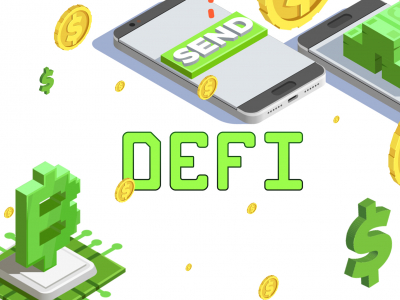Steem is an incentivised, blockchain-based social media platform, as defined in its white paper published in March 2016. These days it grows explosively and seems to become the main social media disruptor.
To be more precise, there is a distinction between Steem the blockchain, STEEM the cryptocurrency and Steemit the social media website.
Steem and its network protocol were announced for the first time on 24 March 2016 in a post on bitcointalk.org. Following the launch, the bitcointalk community had an opportunity to test the code for a few days. This was followed by a relaunch, and mining STEEM began. According to the project’s website, over two dozen individuals started mining STEEM in the first few hours.
Because Steemit Inc mined over 80% of the available cryptocurrency during the first week, less than 20% of STEEM remained liquid at that time. For them, a sophisticated algorithm is applied to assign mining rights. On the average, a block is produced every 2 seconds. Every 21 blocks, there is a rotation of 21 active miners, of whom 19 individuals from around the world are selected as top miners by STEEM holders’ voting, one block producer is selected by proof-of-work mining. The remaining seat is timeshared by a queue of all other miners in the network.
In May 2016, steemit.com Beta was launched and the project is now proceeding to its last two phases, namely the launch of steemit.com scheduled for this month and the public launch of the platform in July, which will be accompanied by the intensive promotion of the service and related signup bonus and referral program. Moreover, on 4 July 2016, around 5 million STEEM will be distributed among the best content producers at steemit.com.
Old Power/New Power
Steem is an aphetic form of esteem which means to set a high value on or to prize. In the 14th-16th century it meant value. Steem is also a homophone for steam which is frequently associated with power. It only seemed right for a cryptocurrency to be associated with value and power.
What Steem is doing, basically, is combining the blockchain technology with the concept of social media. The first enables the possibility of microtransactions within steemit.com, which take the shape of either votes or rewards. Thus, steemit.com focuses strongly on 1) quality content (one is motivated to upload something worthy of attention in order to get more votes and to be rewarded better), 2) curatorship (the voters themselves are being rewarded for making sure that the website maintains the high level of its content), and 3) community building. In this sense, Steem’s concept theoretically offers a long-awaited alternative to platforms such as Facebook, which have been increasingly viewed and criticised as, in David Hesmondhalgh’s words, “the archetype of a business that relies on the activity of its users as the basis of profit.”
In 2010, Hesmondhalgh noted that,
Digitalisation has led to a proliferation of new forms of amateur and semi-professional production… Phenomena such as Wikipedia and open source software are, without doubt, fascinating examples of cultural activity that attempt to base themselves on the pleasures and rewards of co-operation rather than competition. It is certainly the case that the cultural industries in the digital era, like many other kinds of firm, increasingly seek to draw upon the participation of their users and consumers.
Thus, he addressed two key features of Web 2.0 champions such as Facebook, YouTube and Wikipedia, which were previously discussed by Nicole S. Cohen in 2008, namely user-generated content or, in other words, the transformation of the user/consumer into a producer of content and the emphasis on networking, connectedness and P2P interactions. What Cohen pointed out in addition, however, and in relation to Facebook, in particular, was the key role of surveillance in this ‘new’ e-capitalism.
It was along the same lines that the renowned peer-to-peer theorist Michel Bauwens discussed both Facebook and bitcoin in 2013 when introducing his view on four possible collaborative economy scenarios. In his closing keynote at the OuiShare Fest, Bauwens argued that while the P2P future is inevitable, it could be constructed in at least four different ways. He used Facebook as an example of centralised control over a P2P system with for-profit orientation, whereas bitcoin was listed as a case of distributed capitalism, that is, distributed control of peer-to-peer dynamics with a for-profit orientation.
I am a fan of bitcoin,” Bauwens said, “because it is the first globally scalable, digitally enabled, socially sovereign post-Westphalian currency” and an example of “the first time we have proven as humanity that we can create a globally scalable currency outside of the market and outside of the state.” Bauwens, however, spoke about ‘oligarchy’ enabled by the bitcoin design and concluded: “Thank you bitcoin for doing this, because now we can make something better.
If we borrow Bauwens’ concept for a moment and try to see where is Steem’s place in it, at first it seems that it is an example of a decentralised P2P system with a for-profit orientation, like bitcoin. The key here is the question who is profiting. The answer in the case of Steem is not a simple one – it is the Steem community which should profit and in this sense, Steem is aiming to return the ‘power’ to the content users/producers. At the same time, however, should STEEM the currency gain momentum as well, everyone who is in any way involved with it, like miners, will also stand to profit. As the Steem’s white paper declares, its most important design principle is “that everyone who contributes to a venture should receive pro-rata ownership, payment or debt from the venture… The second principle is that all forms of capital are equally valuable… The third principle is that the community produces products to serve its members.”
Steemians, minnows and whales
In a sense, if one eliminates the blockchain and cryptocurrency component, Steem would seem fairly similar in spirit to the hitRECord online community and open-collaborative production company established and directed by Joseph Gordon-Levitt.
One significant difference between steemit.com and hitRECord as platforms is the latter’s emphasis on collaboration. While Steem is all about community and community building, each Steemian is still very much a producer of their own content, whose quality is consequently validated by the community. To borrow Hesmondhalgh’s terms again, Steem is both about cooperation and about competition (unlike Wikipedia, for instance). Users on steemit.com, in fact, are divided into two major groups called whales and minnows, that is, large and small stakeholders who differ in their voting power and thus play an important role in determining the popularity of published posts and consequently the reward. Voting on steemit.com (both upvoting and downvoting are possible) has so far been one of the trickiest features of the platform’s internal life. It is probably why users have started experimenting with different scenarios, analyses and tricks as to how to achieve the most out of their publications.
What is certainly quite clear, however, is that Steem is making a splash after only two months of being out in the world and whether one likes its philosophy or not is much less important, than getting to know it and understanding its success so far.
Diana Bogdan
















